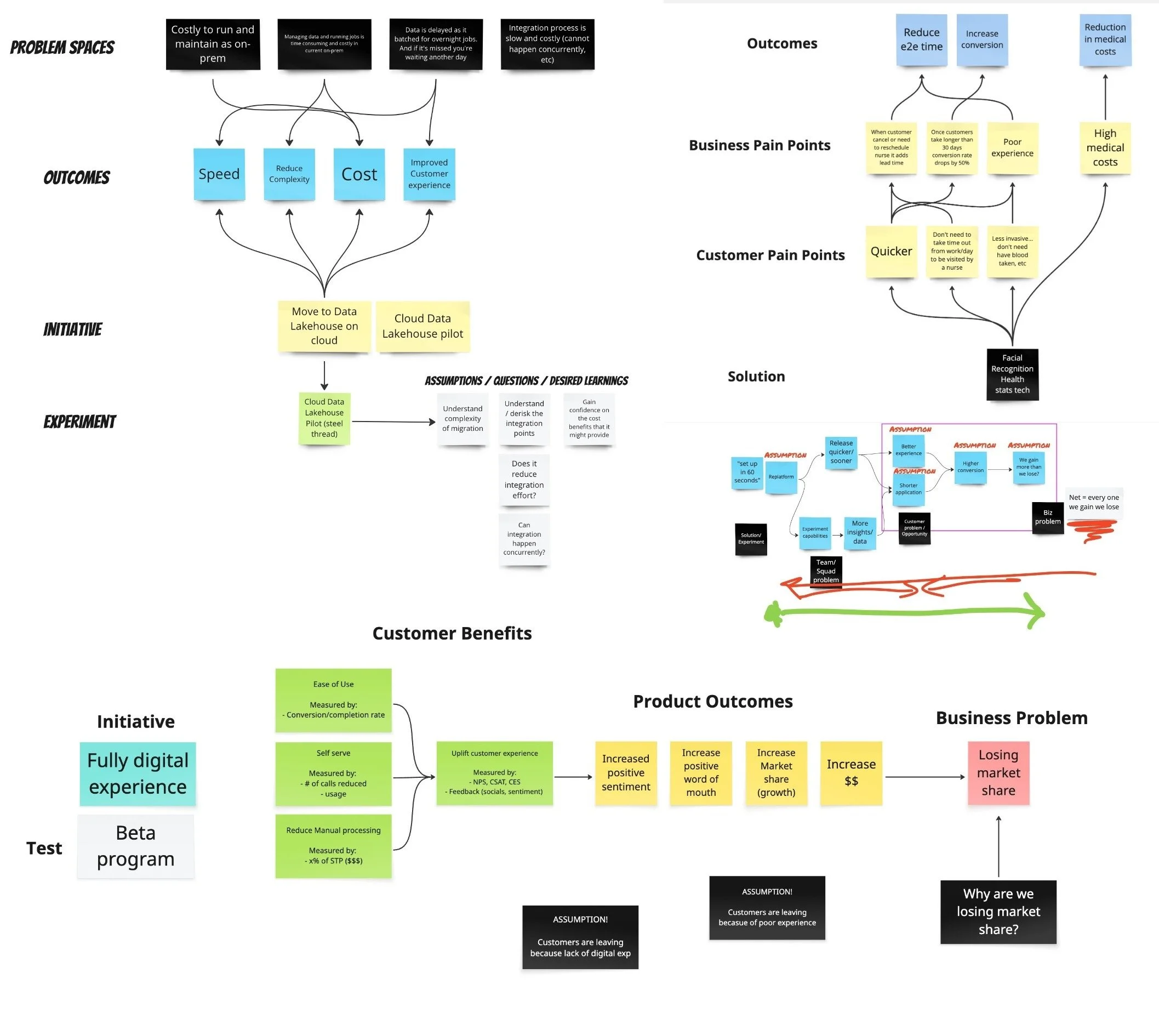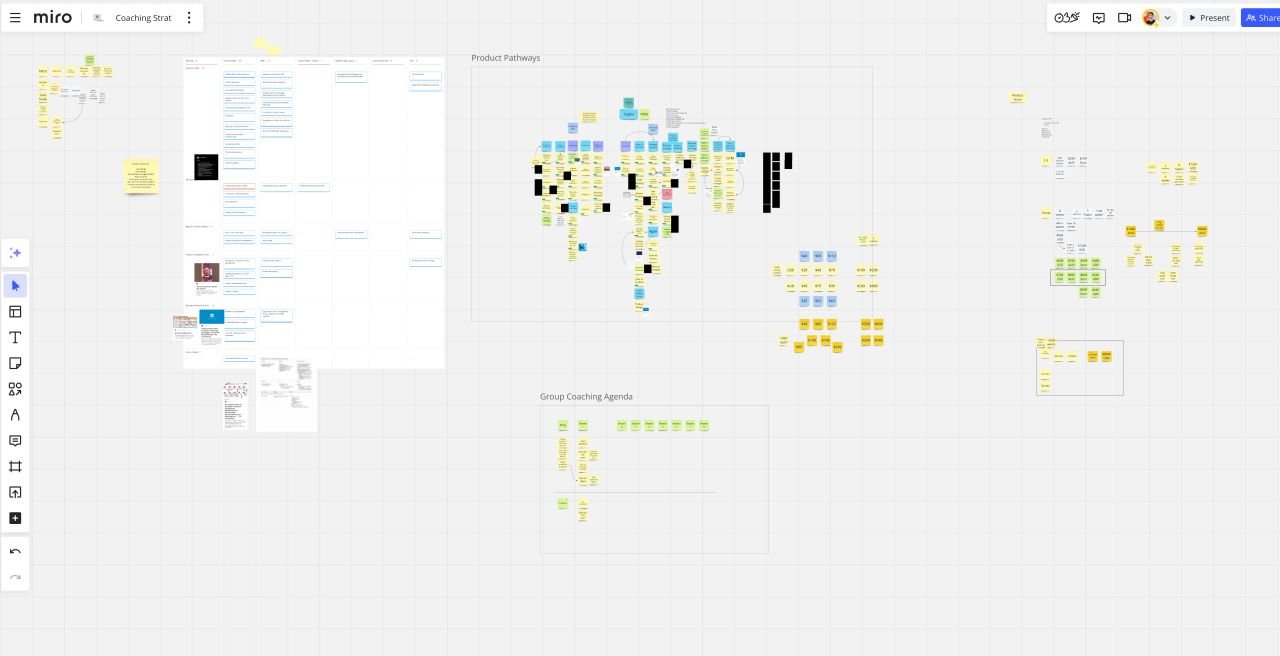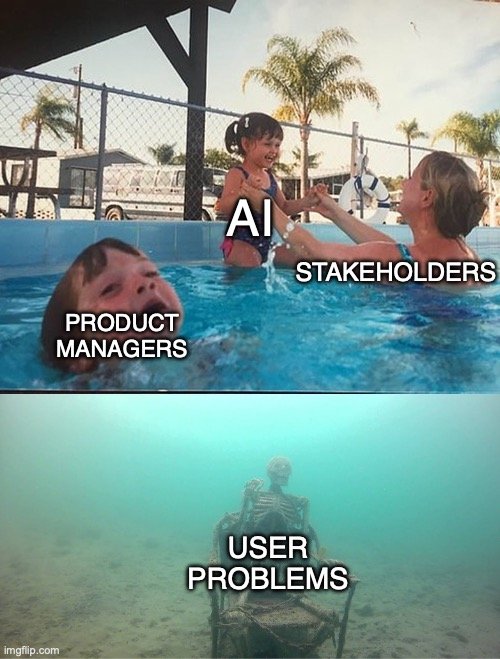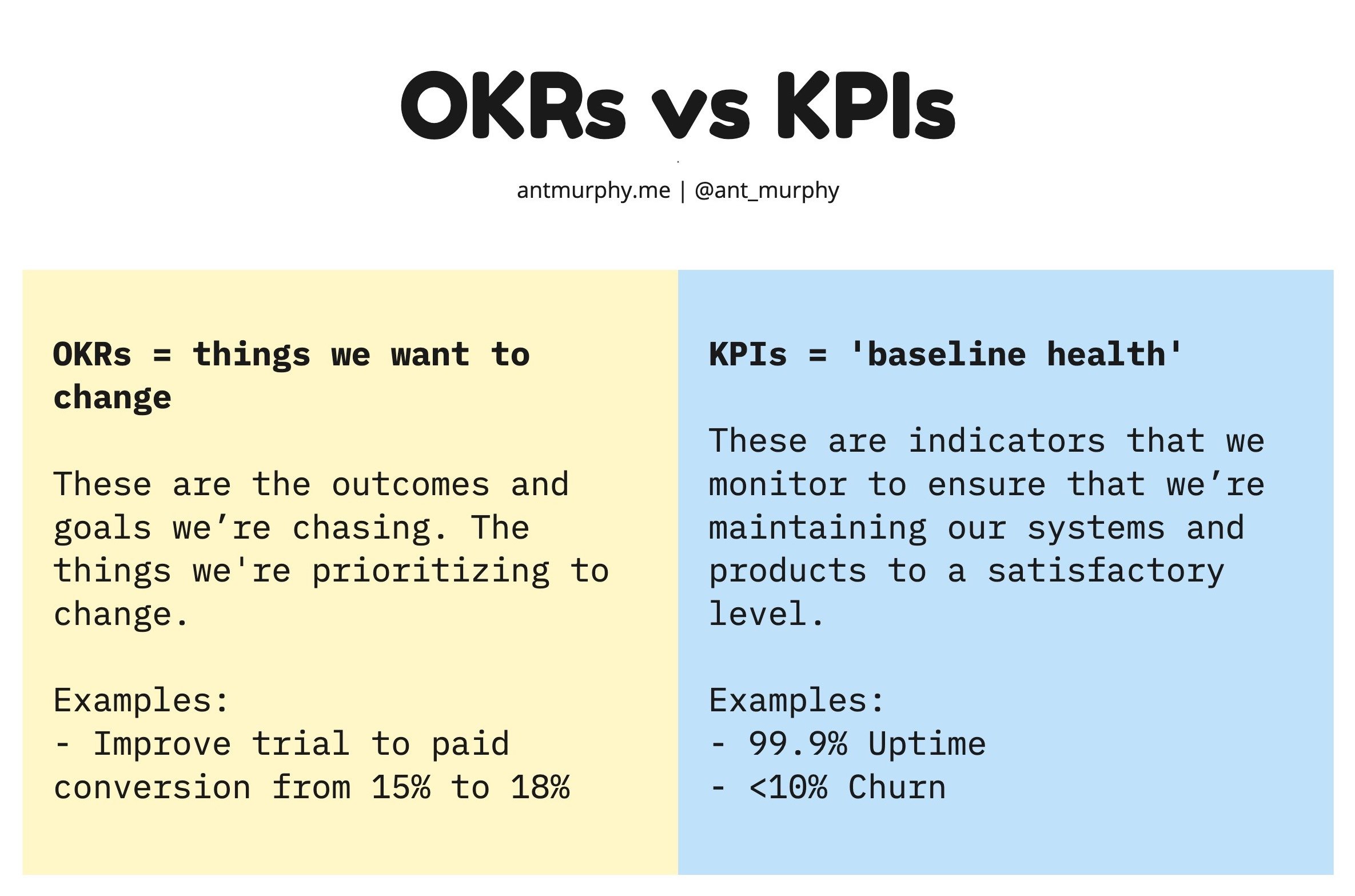Why You Need a 'NOT Doing' List, not a Todo List
This post help you grow your product or business by removing rather than adding.
We usually think in additive terms.
Building the next feature, the next 'big bet', or expanding into a new market.
It's always adding more.
But what if growth could be found in removing instead?
I believe this is true for most products.
And it's was why I decided to create a NOT doing list rather than a todo list this year (full list at the end).
Additive = Better (or does it?)
More is better, right?
Well, a recent analysis done by Pendo found that 80% of the features are rarely to never used.
Which sounds more like a lot of waste.
Consider when was the last time you removed a feature or sunsetted a underperforming product?
I'm sure you've seen TV remotes all taped up like this.
Source Reddit
Which is a great representation of the Pareto principle (aka the 80/20 rule).
Of course, there are important features that are infrequently used, but let's be real. I'm yet to meet someone who knew what those colored buttons were for on TV remotes—if you know, do tell, and if you have no idea what I'm talking about, you're probably too young!
Modern TV remotes look nothing like this today.
Besides constantly losing them behind the couch, they're a much simpler design.
My old vs new TV remotes (circa 2019)
There are a lot of benefits to removing unused features or products, but we rarely do it.
Unused features are dead weight.
From a software point of view, it’s more code that you need to maintain. That’s code that needs to be refactored, extended, and potentially altered for new features.
The more code you have, the more complex your code base is and the more difficult it is to maintain and extend. This slows down future development - When Did You Last Remove a Feature?
Here's a question for those in the middle of annual planning: what have you decided to remove or stop this year?
Nothing..?
Annual planning is a prime example of this additive mindset.
Every year, we create a laundry list of features we'll deliver, 'bets' we're making, and projects we will (finally) get done.
It's rare to see "remove" or "do less of" in an annual plan.
And the hard truth is that most of those things won't work out.
Worse, it might make you go backward!
Negative Value
This brings me to my second false narrative that underpins this problem.
The idea that all value is positive.
The danger with this thinking is that if everything we do has a net positive result, then, of course; more features = more value!
But this isn't true.
Not everything you do will be a net positive.
And whilst we're familar with the idea of coming out with zero, some will have a negative effect.
I refer to this as negative value.
And it's a problem with prioritization matrixes and formulas, they rarely consider that value can do in the opposite direction!
Here's some examples to make this real.
When Google’s AI launched at the start of 2024 it had some interesting answers and created some hilarious moments like telling users to add glue to make the cheese on their pizza more stretchy 😆
But it also had some dangerous and downright not ok responses.
Now, of course, Google is so big that the brand reputation was probably shrugged off, but not all companies are in that privileged position.
In some cases, it has legal ramifications.
I'll use this extreme example to hopefully illustrate the gravity of what I'm talking about.
In 2020, a 20-year-old unfortunately took his own life after using a popular trading app known as Robinhood.
For those unfamiliar, Robinhood is a mobile trading app that took off at the start of 2020. Popular for its easy-to-use experience, it attracted many everyday people who wanted to get into investing.
Unfortunately Robinhood opened these inexperienced traders up to a lot of the stock market, not just shares but sophisticated instruments like 'Put options'. And in 2020 a young man traded one of these which briefly put his portfolio -$730,165 in the red.
They believe this substantial negative balance led the young man to take his own life.
FYI he didn't really owe $730k it was is position based on the options that he held. It recorrected once the options was sold, but for a moment he had a $730k liability. Sure this is bad design but you could argue that the design for futures instruments like this should have been considered before releasing it to a population who have no idea what they are.
Of course this is an extreme example. Tragic too. And it highlights the ethical responsibility we have as product builders and that negative value exists.
While no one intended for this, it did happen, and more is not always better.
I'm sure you can see the business case on how introducing put options was a good idea, more things to trade, more options, etc.
But unintended consequences happen all the time which is why product discovery and pre-mortems should be regular tools in your toolkit.
FYI if you're wondering, Robinhood was fined and a lawsuit was settled as a result of this in 2021.
Growing with (near) zero-risk
Every new thing we add carries risk.
It's why traditional risk managers are often such a pain for us product people. It's almost like their purpose is to stop any product changes from happening (anyone working in a large traditional enterprise will know what I'm talking about).
But they're right... in a way.
The part they miss is not changing is also risky - *cough* Blockbuster *cough*
Like most things in product it's a paradox to manage, not a problem to solve.
The good news is that you are all great at minimizing this risk!
It's why you do things like product discovery, break things down (smaller = less risk), build iteratively, leverage feedback, and a whole range of other practices.
These practices work because they help us navigate uncertainty and minimize risk.
But what's amazing about the reductive approach is that it almost abolishes risk.
How?
Because we're dealing with the known.
For example, if I know that every webinar generates 100 leads, I can be confident that if I doubled the number of webinars I ran, I'd get twice as many leads.
The 'shiny object syndrome' alternative would be to add something new - like a podcast, that would be cool right?
But who knows if that would generate the same number of leads.
Not to mention the added complexity introducing a podcast on top of webinars... it's more effort, more unknown and less certainty of the outcomes.
But despite all this we still seem to fall victim to this additive mindset. We convince ourselves that the only path to growth is more features or expanding into new segments.
Here are a few questions worth asking:
What is your product's core value proposition? Can you do that better?
Who are your current customers? Can you serve them better?
What features are used 80% of the time? Can you improve their experience?
The problem with too much WIP
Another hidden problem of the additive mindset is too much WIP ('work in progress'). It's a hidden cancer that errods businesses from the inside.
How many projects does your company have in flight right now?
How many are you personally involved?
I can bet most of you are involved in multiple things right now.
I see it day-to-day.
And I'm not perfect either! I include myself here.
I actually believe this is one of the most dangerous spirals a business can have, and many companies are in danger of falling into it right now.
With layoffs, it can be tempting to cut 10% of your people without also reflecting a 10% drop in the workload (or having some other plan for managing it).
Asking your people to "do more with less" isn't the answer.
It starts with leaders making the hard decision on what you're no longer going to do as a result.
There are some public examples of this like when Airbnb put their Experiences product on pause after layoffs during covid (and re-paused it again in 2023) and Xero exiting out of its acquisition of Waddle.
Left unchecked, high 'work-in-progress' is damaging on two fronts:
High WIP is damaging on two fronts: it leads to poor customer outcomes and it leads to staff quitting!
From a customer perspective, when companies overstretch themselves, they slow down.
Service and quality drop, too. They're simply stretched too thin.
Have you ever walked into an Apple Store (you probably have) there's almost always someone available to serve you.
Now compare that experience to just about any other store.
You're walking around wondering if anyone actually works here. When you finally find someone, they're probably in the middle of something, and you're treated like an inconvenience.
It's not great.
There's also sound research showing that multi-tasking leads to more mistakes.
A study conducted by David E. Meyer, the director of the Brain, Cognition and Action Laboratory at the University of Michigan, found that when a person multitasks, not only do the tasks take longer to complete, but they also showed that the number of errors increased.
“When people try to perform two or more related tasks either at the same time or alternating rapidly between them, errors go way up, and it takes far longer — often double the time or more — to get the jobs done than if they were done sequentially” — David E. Meyer
This shows up in customer outcomes, with defects, issues, and sometimes significant things being missed.
From an employee perspective, it's even worse.
There's burnout, too many meetings (we're all familiar with that!), and a loss in productivity.
Eventually, people quit, and the company loses knowledge and IP (intellectual property).
People aren't fungible. That new person you hired wont have all the context and knowledge that the person he or she is replacing.
This creates a vicious cycle that only worsens over time.
The only way to break out of it is to ditch the todo list and create a 'NOT doing' list.
What I'm NOT DOING in 2025
I'm not perfect and far from immune to these common traps.
As Samuel Johnson said; “people need to be reminded more often than they need to be instructed.” so it's ok that we forget at times and need some reminding - it's normal!
Over the last year, I've needed to do less, but with last year starting out slow with client work, I thought I'd have some more bandwidth to continue unchanged.
My mistake.
Lesson learned, and this year, it's time to reduce.
So, there are no goals or a list of things I want to achieve this year; instead, it's about doing less and double-down on what's working!
Here's the 'not doing' list 👇
1. Talks and podcasts
I gave 14 talks and a few podcasts in 2024. This was already a big drop from the previous year, but it was still way too much.
Talks are a big-time suck.
A lot goes into a polished talk. I typically do 10-20 runs of a talk before I deliver it. That's 20x a 30-minute talk, plus watching the recordings and polishing. In the delivery practice alone, I'll sink 20+ hours in, and you can double that to cover the full process.
Now, there are a lot of intangible benefits of doing talks.
There's brand, credibility, trust and connecting with the community.
Plus, I love doing them!
And this is the hard part. It's hard to say no to things that you want to do, but you only have so many hours in the day, and something has to give.
As part of the process of deciding what to cut, I went back through all the talks I gave in the past couple of years, and I could only find two talks that converted into clients.
That's 2 out of ~100!
A low conversion and very high CAC (customer acquisition cost)!
I also realized that half the requests were to talk at some company offsite or to an internal product management guild - or similar.
The challenge with these requests are they're often not paid.
But I would rationalize doing them as a business development activity.
My thinking was that if I gave an amazing talk, they might hire me.
This has not turned out to be the case.
And I felt super dumb when I reflected on why. Logically, if they're asking me to talk for free, that would immediately disqualify them as a leader because they don't have the budget to hire me - duh! 🤦♂️
In comparison, I've been running Product Pathways webinars every month which had over 1,300 join live and over 5,000 views of the recordings in 2024! That's ~10x the reach of all my talks last year.
So, I plan to double down on the webinars. Not by doing more of them, they’ll remain monthly, but I want to invest the effort into making them even better!
2. Sponsored posts
I've lost count of how many inbound requests I get for sponsored posts, and I'm proud that I have said no to all of them bar 1.
The challenge with sponsors are they're a near-instant ROI. Do a post next week (which I was already planning to), and get paid = easy!
But it can quickly become a death by a thousand cuts.
I said yes to one of them for a number of reasons.
For starters, because it was for Miro, and I had already said no 2-3 times.
My relationship with Miro goes back. Not only am I a daily user since they were called Realtimeboard, but I was honored when they reached out to collaborate on a blog post that eventually became one of the first Miroverse templates as part of that launch.
But I also saw it as a test.
Was it going to be that easy?
Short answer no. The admin overhead is non-significant.
But a bigger reason why I've said no to sponsorships is because I'm not in the business of selling ads.
I'm in the business of helping individuals and companies build better products.
It's why this newsletter is free and ungated (and will continue to be).
Why the webinars are also free, and why the 20+ templates on Product Pathways are also free and ungated.
It's also why you don't see any sponsors here or on youtube.
Does that mean no sponsors ever?
Not quite.
Instead, I want to do it the right way.
I'm not here to sell ad space or promote things I don't use or believe in.
Instead I'm looking for long-term partners where there's mission alignment. Companies like Vistaly who I just joined as an advisor.
3. Collaborations
Similar boat to above. But these are even more time-intensive.
I said yes to a few collaborations last year that never went anywhere. Really on reflection I was ambitious in thinking I could have squeezed them in.
I have also ended some long-standing arrangements too.
These were really hard to drop because they've been a reliable stream of revenue for me. Sales is not my strong point, so having someone do that and I just need to 'show up' has been a blessing.
Another reason is that one often requires traveling overseas, and that has become too disruptive to my schedule to continue.
Instead, I want to invest this time into helping those in the Product Mentorship (launching soon: more details and join the waitlist, if you're interested)
4. Social media
Ok this one isn’t a pure stop. It’s more of a 'less of'.
In the second half of 2024, I started to decrease my investment in crafting posts and on social platforms.
While growth has slowed, there are only so many hours in the day (and I’m not about to outsource my social media to AI or a social media manager). It's important to me that my posts, replies, and comments are still me.
Especially with the rise of so many AI bots, I'm even more adamant that I want people to be confident that they're talking to ME!
But another reason why this landed on the chopping block was data.
Again I think there are a lot of intangibles like visibility, trust and brand value to social media but it's not the highest leverage thing.
When I looked at the data, my long-form content (aka this newsletter and youtube) have a higher conversion rate.
Now that's not to say that social posts aren't having an effect and aren't contributing here. No doubt a common funnel is for people to see a Linkedin post and then go to my newsletter - perhaps that's you!
But the main data that I'm focused on is conversion to a client or product pathways customer. Those have been overwhelmingly from long-form content.
The journey goes a bit like this:
Product leader has a challenge
They read a newsletter post I did on the topic, it resonated
This builds confidence and credibility that I can help them with their similar challenge
They reach out
Of course, social media has played a role in this, but it's rare that someone reads a LinkedIn post and reaches out based on that. It’s more a very top of the funnel activity.
The second reason is that long-form content (done well) has a 'long tail'.
Most content performs like this YouTube short I posted a few months ago.
"Short tail" = Spike when posted and then a sharp drop off
You see a big spike at first, and then it tapers off—in this case, there's a sharp drop off.
This is how most social posts perform.
You get 90% of impressions in the first 24 hours (depending on the platform), and then a cliff.
A long tail however looks more like this Stakeholder Mapping video I posted nearly 2 years ago. It was one of my first YouTube videos and it's painful to watch because I now see so many things I would want to improve, but it's performing = win!
Long tail = continued growth over a long horizon (typically with some decline, in this case it's picked up, win!)
You can see how there's been continually, and stead views over a long time.
In fact, this video has created a magical phenomenon—a rare case where the long tail has actually picked up!
And it's not just YouTube.
For example, las year, 7,600 people read a newsletter post I wrote 2 years ago and 3,200 people read one that I wrote 4 years ago!
And I could rattle off dozens more.
So, whilst the investment into long-form content is much higher, the ROI potential is also disproportionate.
Of course, this has a lot to do with social platforms and how they are designed, but I also think there are other dimensions at play that increase the conversion rate.
One is depth.
Social posts are size limited and I typically find my shorter posts do better than the longer ones.
Which makes sense because of the medium.
You're typically scrolling through Linkedin whilst waiting for your coffee. Shorter, easy to consume in the moment posts are favored.
But I also think it's focus. When you're scrolling social media, you're probably going to read 5-10 posts (maybe more) in a short period of time. While stuff will resonate and make you think in the moment, you've consumed a bunch in a short period of time.
In comparison, reading this (or watching a youtube video) requires you to focus on the one thing.
So, whilst I plan to invest less time into crafting social posts and less time on social media, I plan to invest that into long-form content.
Plus you can also have confidence that it's actually me and not some bot!
Compound Growth
Charlie Munger, Vice Chairman of Berkshire Hathaway and lifelong business partner to Warren Buffet, described compounding growth as the “eighth wonder of the world."
This is the final reason why this approach of doubling down on what's working is so powerful - because of compounding.
Few people build a massive audience, business, user base, etc overnight. It takes time.
The challenge with compounding is that it's always there. You just don’t see it.
20% growth when you have only 10 customers sucks, but 20% when you have a million is amazing!
The other challenge is that compound growth is exponential, meaning that it's slow at first and then 'hockey sticks'.
So, we should be prepared for very underwhelming results at the start.
But give it enough time, enough improvement and consistency that 'hockey stick' day will come. But importantly you've got to still be there to ride that wave!
Too often, we chase the next thing, assuming that will give us the hockey stick growth we've been seeking. When, in reality, perhaps we just need to stick with things for a bit longer.
As Jeff Bezos said in an interview with Forbes:
"Friends congratulate me after a quarterly-earnings announcement and say, 'Good job, great quarter.' And I'll say, 'Thank you, but that quarter was baked three years ago.'" - Jeff Bezos
Small plug to the Product Mentorship that's launching over the next 2 weeks.
If you're looking to make this year awesome, kick goals and would like me plus a network of product people like you in your corner then sign up to the waitlist for an epic discount and a bunch of bonuses!
Here's the impact it's already had on the alpha group:
"I found it a great support network, where I could refer to for advice, or to bounce ideas off when I needed to. Based on the material and advice I gained, I could influence C-level about team topology, introduce a KPI tree approach for the whole department and lead a team through a new product process covering goal setting, discovery, and delivery." Jeremy, Product Leader
"Ant Murphy’s resources and coaching have been a game-changer for my professional growth. Ant has a gift for simplifying complex product concepts into practical tools. I highly recommend Ant and Product Pathways to anyone looking to grow in product management and leadership." Cameron, Senior Product Manager
"Ant has helped me change jobs, giving me great advice on excelling at the interview process, and making me believe in myself. Now, he is helping me on my new journey as a Product Leader. I couldn’t be more thankful to have him as a coach. I know he will always be there with wonderful guidance on product management." Naiana, Group Product Manager





















Your OKRs don’t live in a vacuum.
Yet this is exactly how I see many organizations treat their OKRs.
They jump on the bandwagon and create OKRs void of any context.
Here’s what I see all the time…